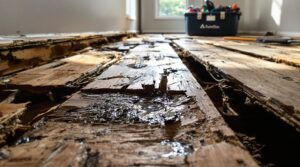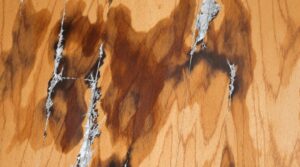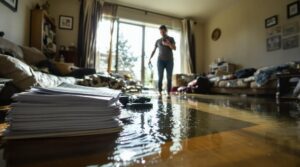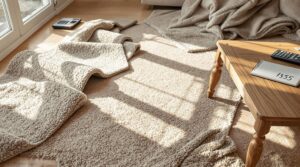Water seeping up through floors typically indicates serious plumbing leaks, groundwater pressure issues, or drainage problems. Immediate signs include warping floorboards, discoloration, soft spots, and musty odors. Property owners should first shut off the main water valve and remove standing water using wet/dry vacuums. Professional assessment helps identify the exact cause through moisture detection equipment and specialized cameras. Understanding the root cause determines whether the solution requires waterproofing, drainage correction, or plumbing repairs. In some cases, property owners may experience water accumulation without visible leaks, which can complicate the detection process. It’s vital to monitor areas around appliances, pipes, and particularly in basements where humidity can lead to mold growth and structural damage. Timely intervention not only mitigates damage but also protects the property’s value, ensuring a safe and healthy living environment.
Key Takeaways
- Compromised underground plumbing, groundwater pressure, and poor drainage systems are the main causes of water coming up through floors.
- Turn off the main water valve immediately and remove standing water using mops, towels, or wet/dry vacuums.
- Look for signs like warping floorboards, discoloration, soft spots, musty odors, and mold growth to identify water seepage issues.
- Install proper drainage systems and maintain gutters with extended downspouts to prevent water from accumulating around foundations.
- Contact professional water damage specialists who can use moisture detection equipment to identify the source and implement targeted solutions.
Common Signs of Water Seepage Through Floors
When homeowners encounter water seeping through their floors, several telltale signs can help identify the problem early.
During floor inspection, visual indicators include warping or buckling of floorboards, discoloration, and peeling or bubbling of surface materials. Soft spots and uneven surfaces often indicate underlying water damage. Initial damage can develop into severe issues within 24 to 48 hours if not addressed promptly.
Professional moisture detection can reveal less obvious signs, such as musty odors and the presence of mold or mildew in dark, consistently damp areas.
Structural manifestations include gaps between floorboards, cracked tiles or grout, and loosened baseboards.
Hidden issues may stem from foundation cracks, failed waterproofing, or a high water table.
Sagging floors and persistent dampness warrant immediate attention, as they may indicate severe structural compromise requiring professional intervention.
Major Causes Behind Water Coming Up From Floor
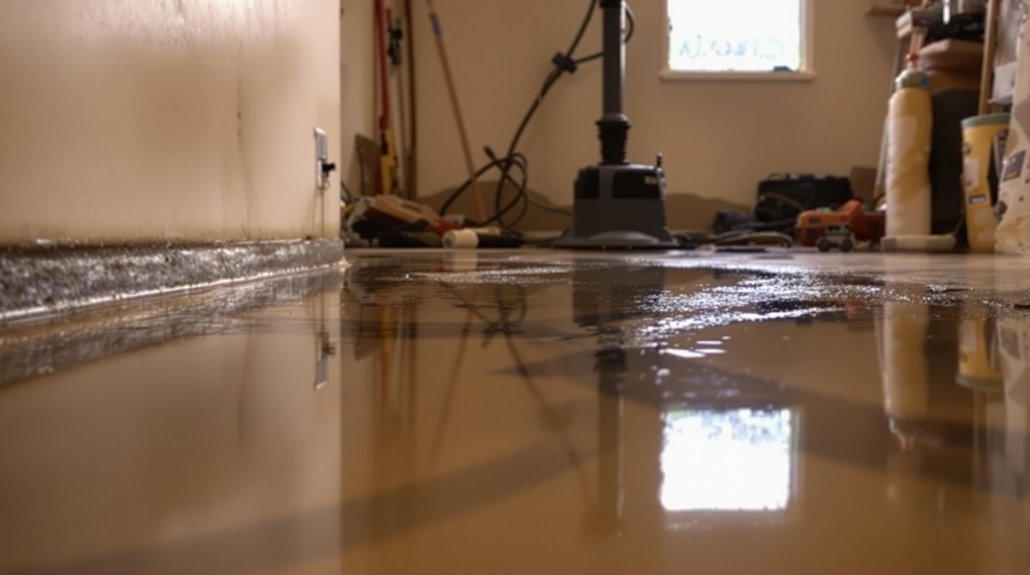
Water seeping up through floors often stems from three primary sources: compromised underground plumbing, groundwater pressure buildup, and inadequate drainage systems.
When underground pipes leak or burst, water can force its way through the smallest cracks in flooring, while hydrostatic pressure from saturated soil pushes groundwater upward through foundation weaknesses. Installing a sump pump can help prevent basement flooding by removing excess water before it rises through the floor.
Poor drainage conditions, including clogged gutters and insufficient downspout extensions, create excessive water accumulation around the foundation, leading to increased pressure that forces water through floor surfaces.
Leaky Underground Pipe Issues
Underground plumbing systems can deteriorate over time, leading to serious leaks that force water up through floor surfaces. These leaks often result from pipe corrosion, loose joints, or ground pressure shifts that create structural weaknesses.
Tree root infiltration and improper initial installation can further compromise pipe integrity. High water pressure can strain the plumbing system and accelerate pipe deterioration.
Effective leak detection requires professional assessment, as underground water issues frequently evade immediate notice. Key indicators include unexplained increases in water bills, persistent damp spots on floors, or unusual sounds of running water when fixtures aren't in use.
Specialized equipment, such as sewer cameras and acoustic sensors, helps pinpoint exact leak locations for targeted pipe repair. Early intervention prevents extensive structural damage and reduces repair costs, making regular plumbing system inspections essential for maintaining building integrity.
Groundwater Pressure Problems
Beyond leaky pipes, groundwater pressure represents a significant factor behind water intrusion through floor surfaces. This occurs when hydrostatic pressure from elevated groundwater levels exerts force against basement floors and foundation walls.
Regular groundwater monitoring is essential to track these pressure variations, which often fluctuate seasonally.
The consequences of unaddressed groundwater pressure can be severe, causing structural damage through foundation cracks, floor displacement, and continuous water seepage.
Effective pressure mitigation strategies include installing thorough waterproofing systems, implementing proper drainage solutions, and addressing foundation vulnerabilities.
Professional assessment is vital to determine the extent of pressure-related issues and develop appropriate remediation plans. These measures help prevent water infiltration while protecting the building's structural integrity and maintaining a healthy indoor environment.
Poor Drainage Consequences
When drainage systems fail to effectively manage water flow around a property, serious consequences can emerge that affect both structural integrity and occupant safety.
Poor drainage directly impacts soil stability, leading to foundation damage through soil expansion and contraction cycles. Without proper drainage solutions, hydrostatic pressure builds up, causing structural stress and potential wall failure.
- Foundation walls may crack and bow inward due to excessive water pressure, compromising the building's structural integrity.
- Soil erosion and landscape degradation occur, potentially destabilizing the foundation and reducing property value.
- Standing water creates breeding grounds for mosquitoes and promotes mold growth, posing health risks.
- Basement flooding and water seepage lead to damaged belongings, increased maintenance costs, and potential insurance claims.
Understanding Hydrostatic Pressure and Its Effects
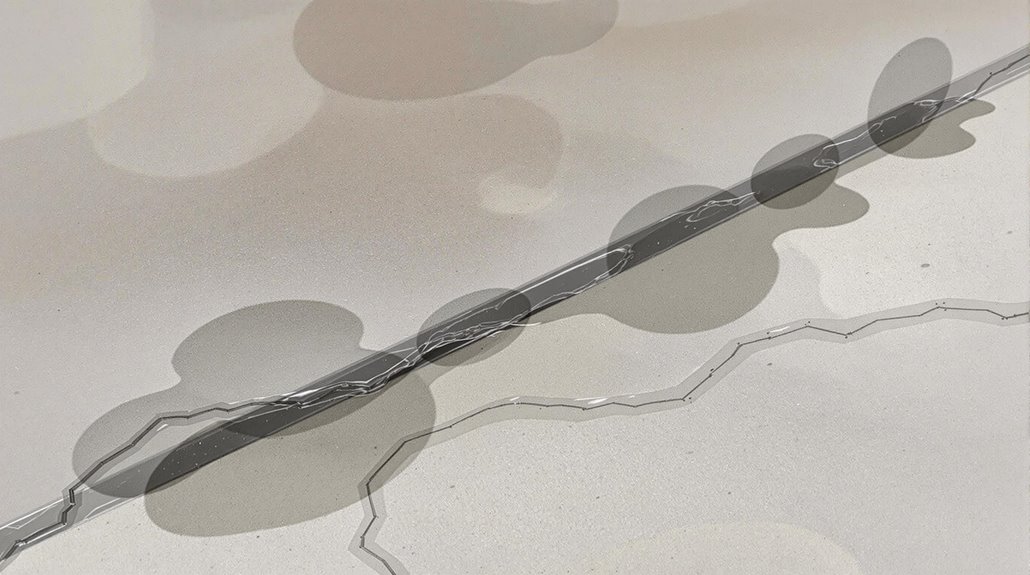
Hydrostatic pressure poses a significant threat to building foundations and structures as groundwater accumulates in the surrounding soil. This pressure intensifies when water from rainfall, snowmelt, or leaking pipes saturates the soil, creating upward and lateral forces against foundation walls and floors.
The effects of hydrostatic pressure on foundation stability can be severe and far-reaching. As pressure builds, it can force water through concrete pores and cracks, leading to basement flooding and structural compromise. Common signs include bowing walls, foundation cracks, and water seepage through floor joints.
In extreme cases, the pressure can cause differential settlement, where parts of the foundation shift unevenly, potentially compromising the entire building's structural integrity. The presence of excess moisture also creates ideal conditions for mold growth and ongoing soil erosion around the foundation.
Impact of Poor Drainage on Floor Water Issues

Poor drainage systems surrounding a building's foundation create ideal conditions for water infiltration through floors and walls. When water accumulates around the foundation due to improper grading, compacted soil, or inadequate drainage solutions, it exerts significant pressure that forces moisture through concrete surfaces.
This hydrostatic pressure, combined with poor moisture control, leads to several serious issues:
- Standing water penetrates the soil and causes basement flooding
- Foundation instability develops from continuous water exposure
- Soil expansion and contraction create structural stress
- Mold and mildew thrive in damp conditions
The long-term impact of inadequate drainage extends beyond immediate water damage, affecting the building's structural integrity and indoor air quality.
Implementing proper drainage solutions, such as French drains and strategic grading, is essential for preventing water-related foundation problems and maintaining structural stability.
Dealing With Slab Cracks and Foundation Problems
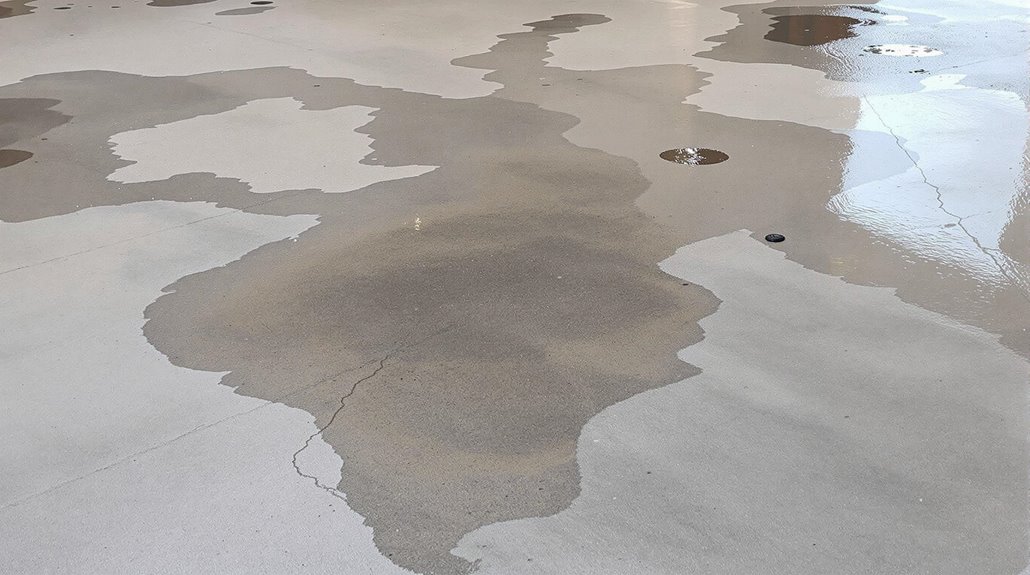
When water penetrates through a concrete slab, identifying the type of crack is essential for determining the appropriate repair method.
Settlement cracks wider than 1/16 inch and horizontal cracks indicate serious structural issues that require immediate professional attention, while hairline shrinkage cracks can often be addressed with epoxy injection.
Professional foundation repair specialists can implement permanent solutions such as hydraulic lifting, foundation piers, or slab stabilization to prevent further water intrusion and structural deterioration.
Identifying Slab Crack Types
Understanding the various types of slab cracks is essential for proper diagnosis and treatment of foundation issues. Slab crack identification begins with distinguishing between plastic shrinkage cracks, which are shallow and parallel, and deeper structural shrinkage cracks.
Concrete shrinkage causes can range from rapid surface drying to uneven curing conditions, with each type presenting distinct characteristics.
- Plastic shrinkage cracks appear during early curing stages and typically remain superficial, showing minimal impact on structural integrity.
- D-cracking manifests as parallel cracks along joints, indicating moisture-related deterioration.
- Offset cracks suggest underlying subgrade issues and require immediate professional evaluation.
- Crazing cracks form intersecting patterns on hard-troweled surfaces, primarily due to inadequate curing procedures.
Permanent Crack Repair Solutions
Several permanent solutions exist for repairing slab cracks and addressing foundation problems effectively.
Professional contractors typically employ epoxy applications through injection methods, which seal cracks and prevent moisture intrusion. This technique proves particularly effective for post-tension foundations, though it may not address underlying structural weaknesses.
For more severe cases, carbon fiber reinforcement techniques offer superior structural stability. The stitching method, which involves installing carbon fiber stitches across cracked sections, maintains aggregate interlock and prevents slab separation. This solution provides long-term durability and structural integrity.
Additional repair options include foam jacking, slabjacking, and masonry patches, depending on the specific crack characteristics and foundation conditions.
Professional assessment is essential to determine the most appropriate repair strategy and guarantee lasting results.
Immediate Steps When You Notice Water Coming Up
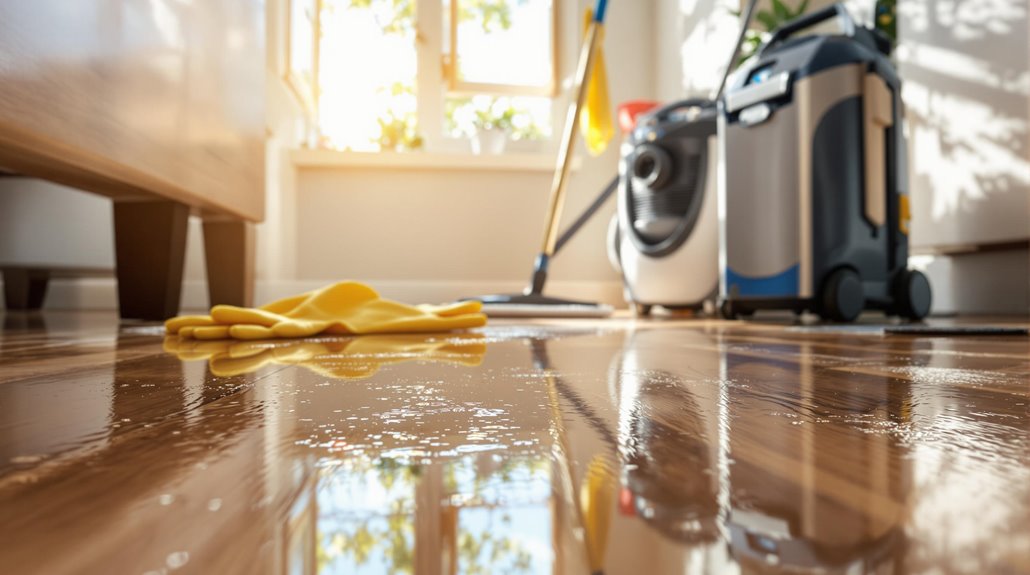
Quick action is essential when water begins seeping up through a floor, as immediate response can minimize damage and prevent serious structural issues.
The first step involves thorough water detection and moisture assessment to identify the source. Homeowners should inspect for visible plumbing leaks, check the water meter for movement, and examine the foundation for cracks.
- Turn off the main water valve immediately if plumbing issues are suspected
- Remove standing water using mops, towels, or a wet/dry vacuum
- Establish proper ventilation by opening windows and using fans
- Deploy dehumidifiers to reduce moisture levels in the air
Once initial water removal is complete, focus on drying the affected area thoroughly while maintaining safety precautions, such as disconnecting electrical power and wearing protective gear when handling wet materials.
Professional Solutions for Floor Water Problems
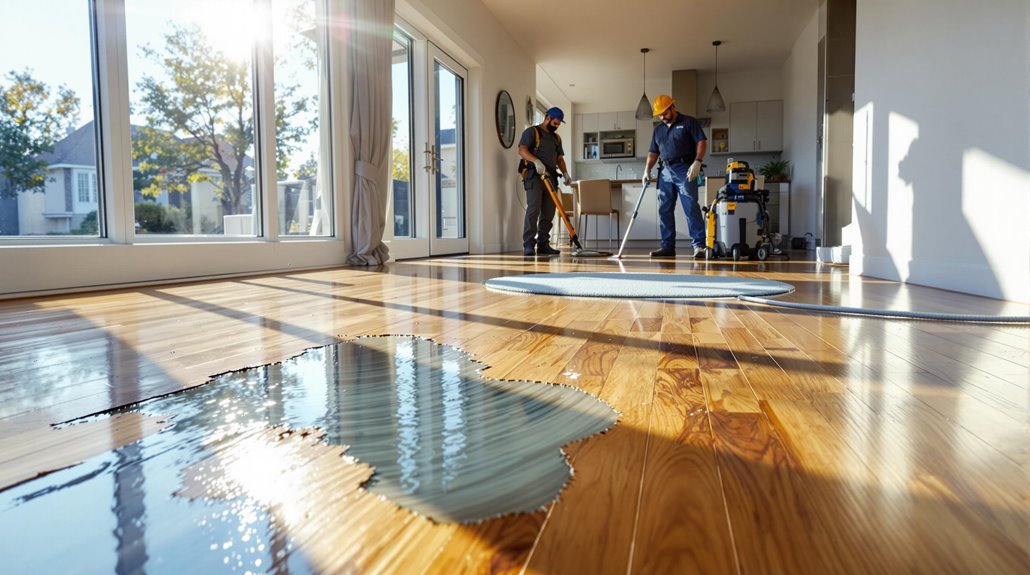
Professional assessment teams employ advanced moisture detection equipment and systematic evaluation protocols to accurately identify the source and extent of floor water issues.
Emergency repair specialists utilize industrial-grade water extraction tools and targeted drying techniques to prevent further structural damage and minimize restoration costs.
These expert services combine detailed documentation, specialized knowledge, and proven methodologies to develop thorough repair strategies tailored to each specific water intrusion scenario.
Expert Assessment Services
When facing water issues emerging from floors, expert assessment services provide extensive diagnostic solutions through advanced detection methods and specialized equipment.
Professional technicians conduct thorough water testing and moisture mapping to identify the source and extent of water infiltration, using thermal imaging cameras and specialized moisture meters.
- Certified inspectors perform detailed assessments of foundation integrity and subfloor conditions
- Advanced thermal imaging technology detects hidden moisture patterns behind walls and under flooring
- Professional moisture meters measure saturation levels in different building materials
- Documentation includes detailed reports with photographic evidence and moisture readings
These assessment services determine the water damage classification, contamination levels, and appropriate restoration protocols.
Technicians utilize their expertise to develop targeted solutions based on scientific data and industry-standard procedures for effective remediation.
Emergency Repair Teams
Emergency repair teams mobilize specialized equipment and expertise to address water infiltration through floors, providing thorough solutions for both residential and commercial properties.
These professionals respond within 24 hours, equipped with industrial pumps, commercial dehumidifiers, and advanced moisture detection technology.
Their emergency response protocol includes immediate water source shutdown, thorough documentation of affected areas, and implementation of repair techniques tailored to the specific situation.
Teams utilize moisture meters and infrared imaging to identify water damage extent, while deploying industrial-grade drying equipment and air filtration systems.
Professional restoration experts evaluate subflooring conditions and determine whether cleaning, drying, and disinfection are sufficient or if replacement is necessary.
This systematic approach guarantees effective water damage mitigation and prevents secondary issues like mold growth.
Prevention Tips to Avoid Future Water Seepage
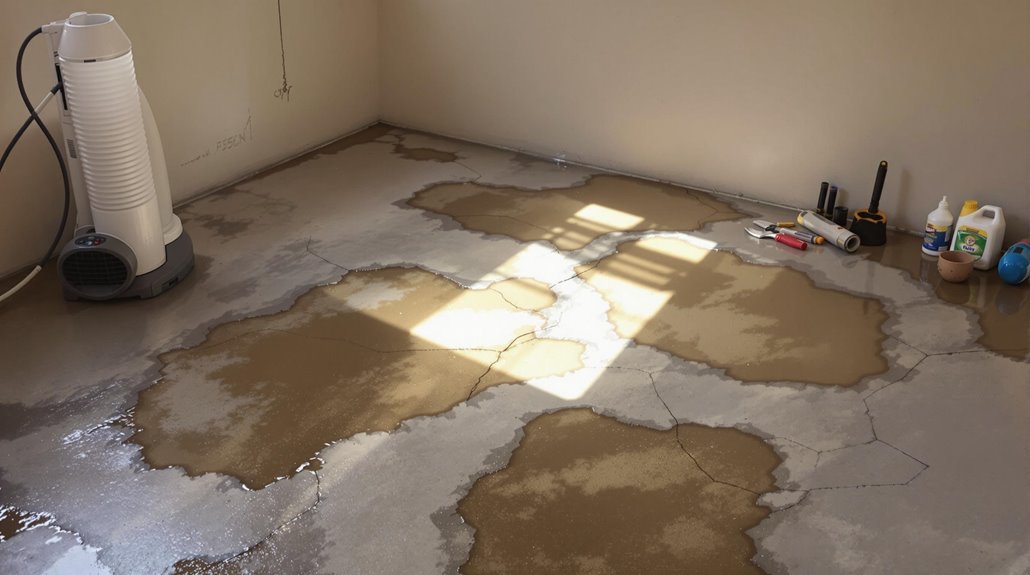
Taking proactive measures to prevent water seepage can save homeowners considerable time, money, and stress in the long run. Extensive prevention strategies focus on maintaining effective gutter systems, implementing proper landscape design, and protecting foundations. Regular inspection and maintenance of these elements create multiple layers of defense against water infiltration.
Key prevention measures include:
- Installing and maintaining properly sized gutter systems with extended downspouts
- Creating positive yard grading and strategic landscape design to direct water flow away from structures
- Applying professional-grade waterproof coatings to foundation walls and concrete floors
- Implementing moisture barriers and sealing all potential entry points, including cracks and cold seams
These preventive steps, when implemented systematically, greatly reduce the risk of water seepage and protect the structural integrity of the building.
Essential Tools for Detecting Floor Water Issues
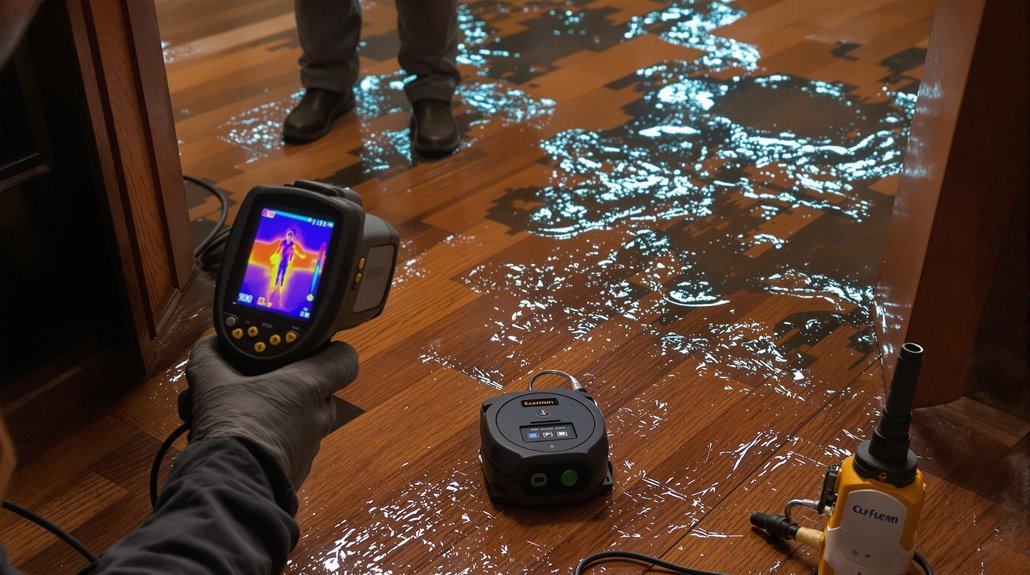
Modern water detection technology provides professionals and homeowners with sophisticated tools to identify and diagnose floor water issues before they become catastrophic problems. Acoustic sensors and thermal imaging cameras lead the way in non-invasive detection methods, allowing technicians to locate hidden leaks without damaging property. These advanced tools work alongside practical implements for thorough diagnosis.
| Detection Method | Primary Tools | Applications |
|---|---|---|
| Non-Invasive | Thermal Imaging Cameras | Behind walls, under floors |
| Acoustic | Listening Discs, Sensors | Pressurized pipe leaks |
| Advanced | GPR, LiDAR Technology | Underground pipes, infrastructure |
When combined with smart monitoring systems and professional expertise, these tools enable precise leak detection and facilitate targeted repairs, minimizing water damage and preserving structural integrity. Regular inspections using these technologies can prevent extensive floor water damage through early intervention.
Long-Term Maintenance to Protect Your Floors
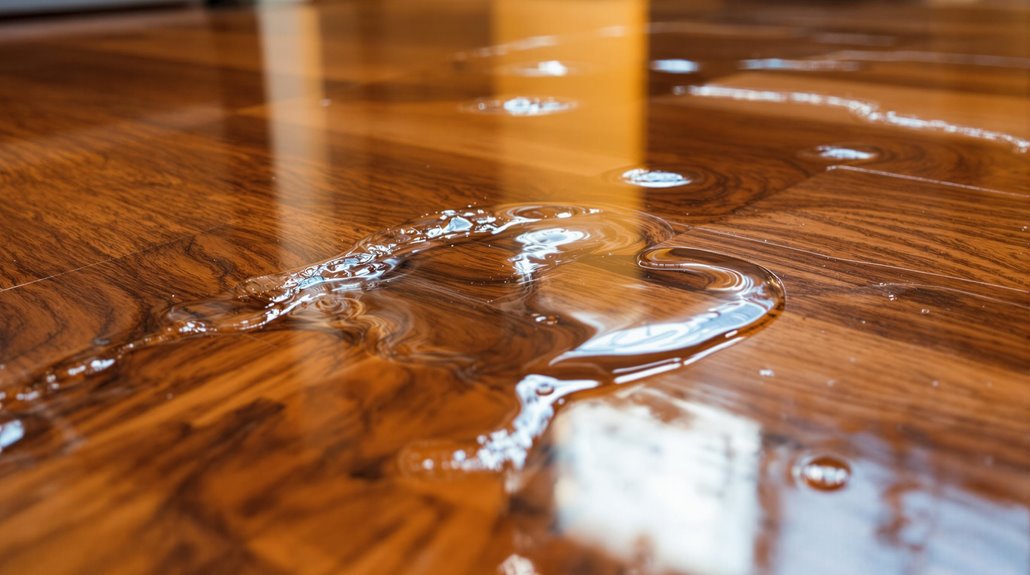
Implementing a thorough maintenance strategy is essential for preserving floor integrity and preventing water-related damage over time. Proper floor maintenance requires a systematic approach that combines regular inspections, preventive measures, and appropriate cleaning techniques to guarantee flooring longevity.
Professional maintenance teams should be trained in specific care protocols for different flooring materials.
Key components of an effective maintenance program include:
- Regular moisture monitoring with professional-grade detection equipment
- Implementation of daily cleaning routines using pH-neutral products
- Installation and maintenance of moisture barriers in vulnerable areas
- Scheduled professional deep cleaning treatments to restore floor surfaces
These preventive measures, combined with immediate response to water issues, help protect floors from damage and extend their serviceable life.
Maintaining detailed maintenance records enables facility managers to track problem areas and adjust care protocols accordingly.
The Benefits Of Consulting A Public Adjuster
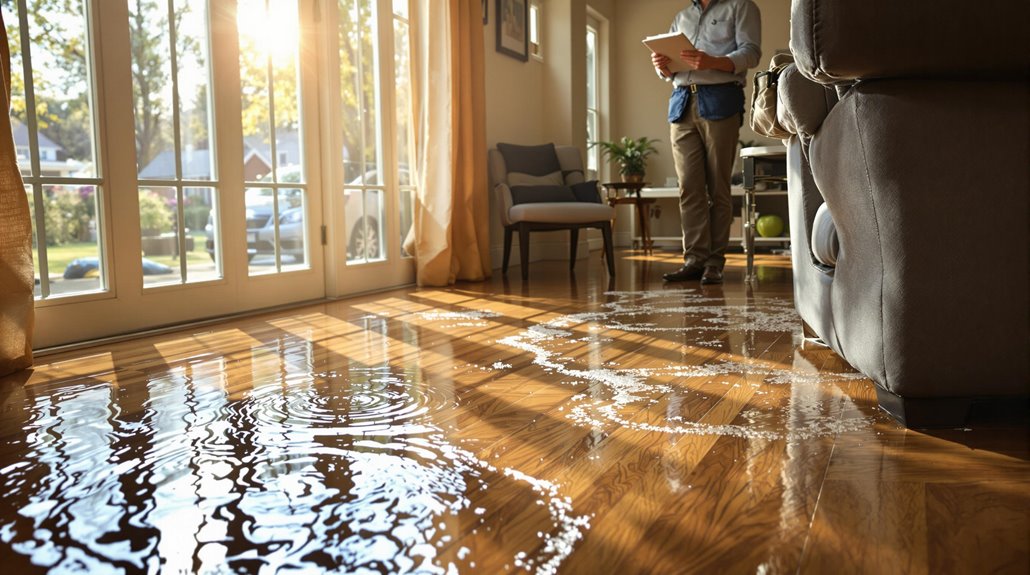
When dealing with water emerging from floors, a public adjuster provides essential expertise in documenting and evaluating both visible and concealed damage while maneuvering through complex insurance claims.
Their professional evaluation helps counter potential lowball offers from insurance companies, often resulting in higher claim settlements through skilled negotiation and thorough documentation.
Public adjusters streamline the entire claims process by managing all communications with insurance companies, coordinating with restoration specialists, and ensuring adherence to vital deadlines.
Studies have shown that claims handled by public insurance adjusters can result in settlements up to 500% higher compared to non-catastrophe claims filed without professional assistance.
Expertise In Insurance Claims
Since water damage claims can be complex and overwhelming, consulting a public adjuster offers significant advantages for property owners seeking fair compensation.
These licensed professionals possess extensive claims expertise and insurance negotiation skills, ensuring thorough documentation and maximum settlement potential. Their specialized knowledge of insurance procedures and policies helps prevent underpayment while minimizing out-of-pocket expenses.
Key advantages of public adjuster expertise include:
- Advanced damage assessment using thermal imaging and moisture meters for accurate documentation
- Extensive understanding of insurance laws and claim procedures for best outcomes
- Direct negotiation with insurance companies to maximize settlement amounts by up to 20%
- Professional representation of property owner interests throughout the entire claims process, operating on a contingency basis
Public adjusters typically charge 5-20% contingency fees based on the final settlement amount, making their services accessible to property owners facing water damage challenges.
Objective Damage Assessment
Professional damage assessment through a public adjuster provides property owners with a thorough evaluation that reveals both visible and concealed water damage impacts.
Using advanced tools like moisture meters and thermal imaging equipment, adjusters document the full scope of affected areas, ensuring no damage goes unnoticed during insurance assessments.
This extensive approach identifies secondary issues such as potential mold growth and structural weakening that may not be immediately apparent.
Public adjusters meticulously analyze the duration and cost of necessary repairs, creating detailed documentation that supports maximizing claim values.
Their objective evaluation helps secure sufficient funding for complete property restoration, preventing insufficient settlements that could leave property owners with inadequate resources to address all water damage-related issues.
Unlike insurance adjusters who may prioritize company interests, public adjuster fees are based on a percentage of the final settlement, ensuring their motivation aligns with obtaining maximum compensation for the property owner.
Streamlined Claim Process
Consulting a public adjuster greatly streamlines the insurance claims process for property owners facing water damage.
These professionals manage all communications with insurance companies, ensuring claim efficiency while providing significant stress relief for property owners. Their expertise in policy interpretation and industry procedures helps expedite settlements and maximize compensation for water-related damages.
Key benefits of working with a public adjuster include:
- Reduced paperwork burden and faster claim processing
- Expert navigation of complex insurance policies and requirements
- Professional documentation and presentation of all damage evidence
- Skilled negotiation to secure fair compensation for repairs
Public adjusters serve as dedicated advocates, allowing property owners to focus on recovery while ensuring their claims are handled professionally and thoroughly.
Their specialized knowledge helps avoid common pitfalls that could delay or diminish claim settlements.
With fees ranging from 5% to 15% of settlements, public adjusters typically secure higher compensation that often outweighs their cost.
Higher Claim Payouts & Settlements
Working with a public adjuster consistently leads to higher insurance claim payouts for property owners experiencing water damage.
Through expert claim negotiation strategies and detailed policy interpretation techniques, public adjusters maximize settlements by identifying all damages, including hidden issues that property owners might overlook.
Their specialized knowledge enables them to challenge insurance company determinations effectively and navigate complex claims processes.
Public adjusters understand insurance company tactics designed to minimize payouts and counter them with thorough documentation and professional assessment.
Operating on a contingency basis, they are inherently motivated to secure the highest possible settlements for their clients.
This expertise, combined with their ability to handle all paperwork and communications, guarantees property owners receive fair compensation while reducing the stress associated with managing complex water damage claims.
Regular consultation with claims experts helps ensure properties receive thorough damage assessments, leading to more accurate settlement amounts.
About The Public Claims Adjusters Network (PCAN)
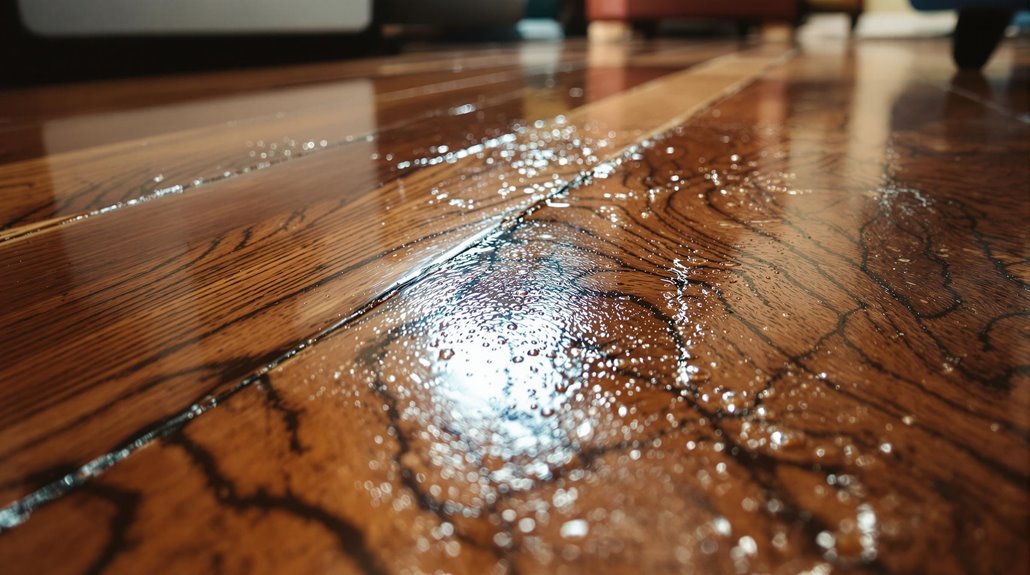
The Public Claims Adjusters Network (PCAN) represents a nationwide coalition of licensed insurance claim specialists who advocate exclusively for policyholders rather than insurance companies.
These professionals excel in claims negotiation and provide extensive support throughout the insurance claim process, ensuring ideal settlements for water damage issues.
Key aspects of public adjuster roles include:
- Professional assessment of water damage and thorough documentation of affected areas
- Expert analysis and interpretation of insurance policy coverage and limitations
- Strategic preparation and submission of detailed claim documentation
- Direct negotiation with insurance carriers to maximize settlement values
PCAN members operate across all 50 states, bringing local expertise and national resources to each case.
Their specialized knowledge in construction and repair costs enables accurate damage evaluation, leading to more favorable claim outcomes for property owners experiencing water damage issues.
Frequently Asked Questions
Will My Homeowner's Insurance Cover Water Coming up Through the Floor?
Like a detective investigating a crime scene, coverage depends on the water damage source. Insurance claims are typically approved for sudden, accidental incidents but denied for gradual seepage or flood-related issues.
How Long Does It Typically Take for Water Damage to Show?
Water damage timeline varies, with initial signs appearing within 24-48 hours. Moisture detection reveals damage through discoloration, swelling, and sagging, while mold typically develops after 48 hours of water exposure.
Can Basement Waterproofing Solutions Work for Above-Ground Floors Too?
Some basement waterproofing techniques can be adapted for above-ground solutions, but modifications are necessary due to different environmental exposures, UV radiation factors, and structural requirements specific to above-grade applications.
What's the Average Cost to Repair a Water-Damaged Concrete Floor?
When money talks, repair techniques for water-damaged concrete floors typically range $1,200-$5,000 per room. Cost factors include damage severity, square footage, and chosen restoration methods.
Is It Safe to Walk on Floors With Water Seepage Issues?
Walking on floors with water seepage presents significant flooring risks, including structural instability and slip hazards. For water safety, avoid affected areas until professional assessment and repairs are completed.
References
- https://www.dalinghausconstruction.com/blog/water-coming-up-from-the-floor-slab/
- https://www.aupress.ca/app/uploads/OER-202302_Chamberlain_Dubberlboer_2023-Read-Think-Write.pdf
- https://www.angi.com/articles/why-water-seeping-through-our-laminate-wood-floor.htm
- https://wac.colostate.edu/docs/books/writingspaces1/writing-spaces-readings-on-writing-vol-1.pdf
- https://www.therealsealllc.com/blog/how-to-stop-water-from-coming-up-through-the-basement-floor/
- https://www.bobvila.com/articles/signs-of-water-damage-under-floor/
- https://drycretewp.com/water-coming-through-floor-what-does-it-mean-and-how-to-stop-it/
- https://restoration1.com/henderson/blog/step-by-step-guide-for-identifying-water-damaged-floors
- https://www.adileakdetection.co.uk/water-seeping-through-floor-causes-and-solutions/
- https://www.servicemasterrestore.com/servicemaster-by-cornerstone/why-us/blog/2024/december/common-signs-of-water-damaged-floors-and-how-to-address-them/


